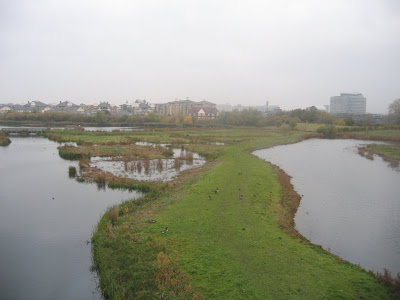


06.NOV.2008 London Walk 2
Paddington to Sloane Square
There is a small open space in front of Saatchi Gallery and it is surrounded by many shops, a bus stop and a football ground for children. The most interesting thing to me was an artistic shape of pole and, the pole is located in next of rectangular benches made of concrete, and looks like a pole with 4 legs. I was not sure whether it is light or not but it works well with benches to make a view of geometrical space.
I am interested in open spaces as public places and parks among buildings in cities, because, it may be an oasis for people who are exhausted by works in a city, so that kind of places are very important and needed today. That open space looks like a concourse between the modern gallery and ordinary buildings.

















































